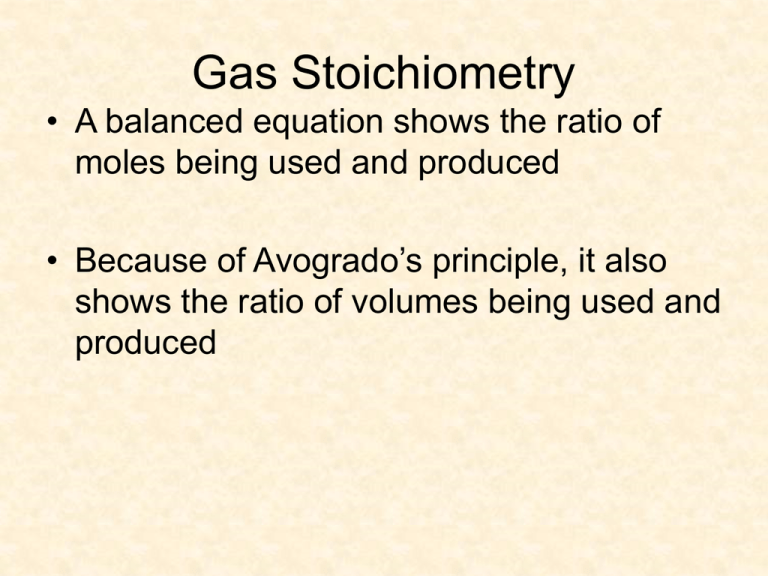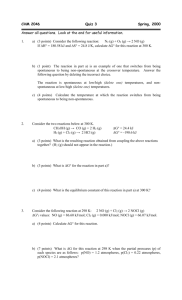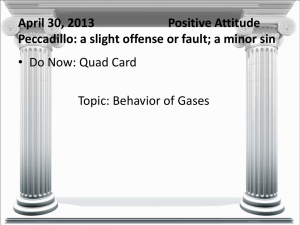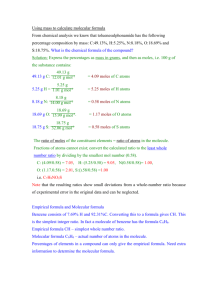1115250Notes 14.4
advertisement

Gas Stoichiometry • A balanced equation shows the ratio of moles being used and produced • Because of Avogrado’s principle, it also shows the ratio of volumes being used and produced Example 2C4H10(g) + 13O2(g) 8CO2(g) + 10 H2O(g) • Shows molar and volume ratios • Questions: – How many moles of oxygen are required to produce 35 moles of water? – How many liters of butane does it take to completely react with 50 liters of oxygen? Try It • What volume of oxygen (O2) is needed to react with solid sulfur to form 3.5 L of SO2 gas? O2(g) + S(s) SO2 (g) so 3.5 L O2 yields 3.5L SO2 • What volume of oxygen is needed to completely combust 2.36 L of methane gas? CH4(g) + 2O2 (g) CO2(g) + 2H2O(g) 2.36 L CH4 X 2 mol O2/ 1 mol CH4 = 4.72 L O2 Volume and Mass Problems • A balanced equation indicates both moles and volume (for gases) and can convert either to mass • Example: N2(g) + 3H2(g) 2NH3(g) If 5.00 L of nitrogen reacts completely at a constant pressure and temperature of 3.00 atm and 298 K, how many grams of ammonia are produced? Try It 1. Given: NH4NO3(s) N20(g) + 2H2O(g) Calculate the mass of solid ammonium nitrate that must be used to obtain .100 L of dinitrogen oxide gas at a pressure of 3.00 atm and a temperature of 15o C. Hints: change .100 L of N20 into moles calculate moles of NH4NO3 that reacted calculate the mass of the NH4NO3 Answers 1. NH4NO3(s) N20(g) + 2H2O(g) PV = nRT or n = PV / RT n = 3.00 atm x .100 L / 288 K x .0821 atm L/K mol . . = .0127 mol N2O .0127 mol NH4NO3 .0127 mol NH NO x 79.035 g/mol = 1.00 g NH4NO3 4 3 Try It 2. Solid potassium metal will react with Cl2 gas to form ionic potassium chloride. How many liters of Cl2 gas are needed to completely react with .204 g of potassium at STP? 2K(s) + Cl2(g) 2KCl(aq) Steps: convert grams of K into moles determine moles of Cl2 needed convert moles of Cl2 to liters Answers 2K(s) + Cl2(g) 2KCl(s) .204 g K x 1 mol / 39.098 g = .00522 mol K .00522mol K x 1 mol Cl / 2 mol K = .00261mol Cl2 2 PV = nRT so V = nRT/P = .00261 mol Cl x .0821atm L/K mol x 273 K / 1.00 atm 2 . . = .0585 L or 5.85 x 10-2 L or 58.5 ml











